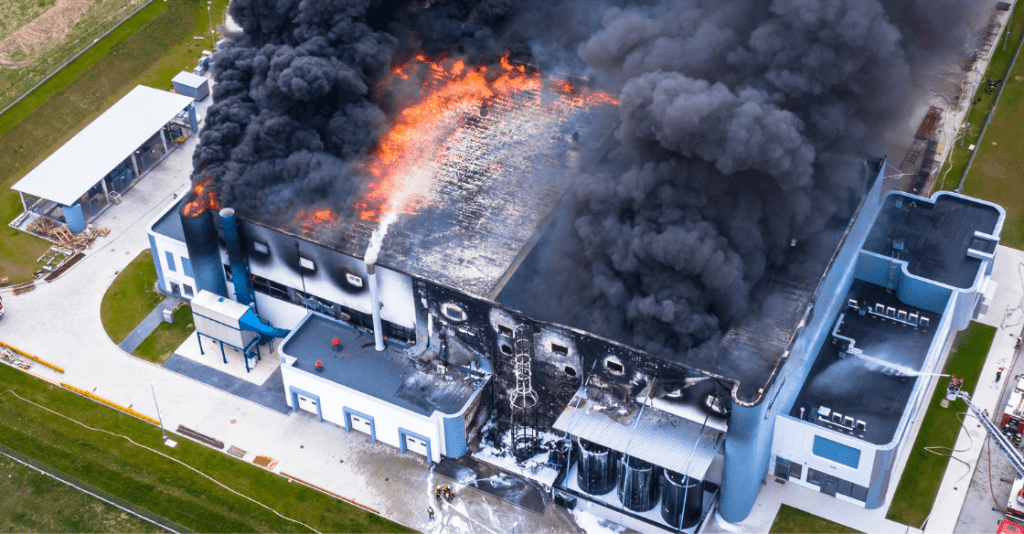If you own an indoor sprinkler system for your business, having it inspected regularly can help prolong your system’s life and, therefore, help protect your property. A fire sprinkler system inspection can occur weekly, monthly, quarterly, annually, or on a 3-year or 5-year basis. The inspection schedule for each system is determined by the NFPA 25. Each type of fire sprinkler inspection has its purpose, but they each have the same end goal in mind. The aim is to prolong the system’s life and make sure the sprinkler system will perform correctly if a fire breaks out.
Here we will take a closer look at why routine fire system inspection is essential and what you should expect from the process.
Why Fire Sprinkler Inspection is Important
Fire sprinkler systems are critical because they can help save lives. But having these systems installed and fitted into place is only the beginning of the process. That’s because several different things can go wrong with these useful systems. A small leak in a pipe or a damaged sprinkler head could cause your sprinkler system to malfunction.
Although fire sprinkler inspection and maintenance may seem like a repetitive task for business owners, they play a crucial role in keeping your property and your workers safe. As long as you take care of them properly, they will do their job accordingly. And part of taking care of these systems requires you to have regular fire sprinkler system inspections.

What Does a Wet Sprinkler System Inspection Look Like?
Because there are different types of fire sprinkler systems, the inspection process is different for each one. When looking over a wet system, the inspection team will look at each valve and check to ensure all gauges are calibrated and in date. Next, they will check if spare heads are available for the system, and all tools are in place to install them if needed.
Afterward, the team will check for anything that may appear broken or damaged with the fire sprinkler system. The technicians will check for instances such as areas with zero protection or sprinkler heads that should be cleaned due to the accumulation of grease or dust. Depending on their overall condition, some of the sprinkler heads may need to be replaced due to damage.

What Does a Dry Sprinkler System Inspection Look Like?
The dry valve must be tripped out with dry sprinkler systems. This is the main variance between wet and dry systems. That is also commonly known in the industry as a choke trip. During a choke trip, the inspection team tests the valves’ function by simulating the actions of a real fire, all while choking or preventing the water from coming up.
Dry fire sprinkler systems are often used in areas where freezing occurs, such as outdoor locations or attics. Therefore, the pipes in the system only contain air, and water is not stored in them to prevent the pipes from freezing and bursting. The water is instead stored below.
Each year during an inspection, the valve is tested to guarantee it trips. The process is timed, and the inspection team obtains a pressure drop. This indicates how much air is in the system. The valve will trip when it reaches its lowest possible air pressure rating. A full trip test is performed every three years on a dry fire sprinkler system. The amount of time it takes for water to flow and reach the end of the line is timed. The passing time for these systems is between 60 and 90 seconds.

Inspecting Your Fire Alarm and Other Equipment
It’s essential while having your fire sprinkler system inspected that you also have your company’s fire alarm inspection completed as well.
To make sure the fire alarm is working as it should, it will need to be inspected and tested regularly as well. Two technicians will be required to perform this task. One technician will remain at the fire alarm panel while the other goes throughout the building and different floors to inspect and test the important fire protection products. This can include pull stations, smoke detectors, fire alarms, fire alarm horns, and strobes.
The tech stationed at the fire alarm panel checks to make sure the panel is triggered and activated each time one of these products is tested. If something fails to trigger the panel, that piece of equipment must be repaired or replaced to pass inspection. This would also be a good time for any fire extinguisher maintenance to be performed.
Final Thoughts
A routine inspection of your fire sprinkler system will ensure the safety of your property and comply with your building maintenance plan. On average, around 80% of all small businesses who experience a tragic fire fail to reopen because the damages are just too expensive.
To protect your business and the people who work for you, it is essential that you closely follow a fire protection inspection schedule for testing and maintenance of your system. Doing so will not only ensure that your investment remains safe, but it will also protect your employees, customers, and any other individual who enters the building.
For more information about the importance of fire sprinkler inspections or to schedule an inspection for your company, get in touch with the experts at APFE Corp. today by calling 1-866-353-2790. We look forward to assisting you and answering any questions you may have.




